
We would like to share with you short video about the TdSE 2016 conference (organized by German chapter of INCOSE) and mecPro2 research project results event in Germany. Enjoy video from these 2 events:

“Everything new endangers something old… This is the price that must be paid for progress and it is worth it.” Hyman G. Rickover Good quality video tutorials and the best tips & tricks from Systems Engineers to Systems Engineers. Welcome to Systems Architecture Guild (www.systemsarchitectureguild.org) and its companion YouTube channel (http://tinyurl.com/showmethewow). Author says “I’ve started […]
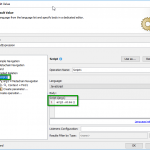
You might already thought about tracking metrics based on model data. However how difficult is to create your own metric? Using MagicDraw metrics capability and structured expression dialog to setup almost any metric logic and calculate it requires no coding. If you already using structured expression dialog to query model for derived properties or smart […]
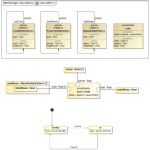
The rollup calculations are among the most common use cases in systems engineering. System modelers want to calculate total mass, cost, power, or another system dimension, based on individual values of all the parts in the model. During this webinar, you will learn how to perform different kind of rollup calculations in the MagicDraw model with Cameo […]
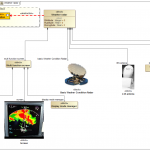
It is quite often we are asked about connection between DoDAF and SysML. They coexist together very well! Both are OMG standards (same comon metamodel behind), so everything is fully reusable and traceable. Positioning and connection points DoDAF framework provide tools to describe the enterprise architecture – starting from capabilities, going to operational level and […]

A modeling culture is the combination of modeling, model usage and model governance that together provide a productive way for applying model-driven development in the context of a particular organization. When we talk about model usage, we talk about impact analysis, coverage analysis, trade studies, behavioral simulations, testing, code generation, etc. Any example of model […]
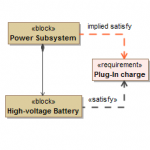
The Dependency Matrix is an ideal tool for efficient analysis of dependencies between elements. In some cases, dependencies between particular elements can cause indirect relations with other model elements. Let’s take a look at the following image. In this example above, composition and inheritance structures between blocks are displayed. If a composite part depends on […]

The Thirty Meter Telescope (TMT) system is currently being developed by the TMT Observatory Corporation. The main objective for the TMT related analysis is to provide state-dependent power roll-ups for different operational scenarios and demonstrate that requirements are satisfied by the design as well as mass roll-ups and duration analysis of the operational use cases. […]

This paper documents the real-world application of model-based systems engineering (MBSE) methodology and principles to an automotive driveline system. A system model developed in the course of this thesis supports the definition and sizing of the driveline system to best communicate and deliver functional specifications tied to customer requirements. Furthermore, this system model documents, organizes, […]
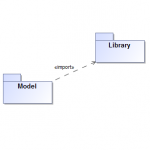
System designs are created at different levels of abstraction. There are two problems implied by this statement: A systems engineer working in one abstraction level does not want to use elements from another abstraction level in order to keep the model consistent. For example, when selecting a type of a part property in a SysML […]
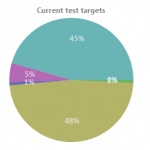
In many industries, like aerospace, defense, telecommunication and others, it’s becoming common to use UML/SysML to describe system architectures. With the introduction of OMG fUML, many companies began refining their models to the level where they became executable. The next big step is to adopt model-based testing in which standard executable models are reused to […]
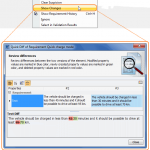
Requirements change over time: new requirements are created; existing ones are modified or deleted. Systems engineers need to know the impact these changes will have on other related artifacts such as design elements or test cases. Suspect Links capability helps users track changes in requirements that are linked to design elements, as well as allow […]

“When compared to typical systems engineering endeavors, the application of model-based systems engineering delivers a 55% reduction of the total development cost. The most mature form of MBSE is model-based product line engineering (PLE). When compared to typical systems engineering endeavors, the application of model-based product-line engineering delivers a 41.6% reduction of the total development cost.” These […]
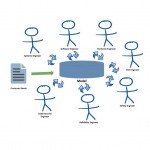
One of the common objections I’ve heard to adopting Model-Based Systems Engineering (MBSE) is that it is prohibitively expensive. The tools used to perform MBSE are more expensive than tools previously used to perform Systems Engineering. The costs associated with training an existing Systems Engineering workforce in the methods, semantics (languages such as UML or SysML), […]
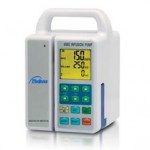
The INCOSE Biomedical-Healthcare Model-Based Systems Engineering (MBSE) Challenge Team has developed a reference model that uses SysML to represent a generic Medical Device infusion pump and a systems engineering process for planning, developing, and obtaining regulatory approval of a medical device. This presentation describes recent updates to the model that incorporates Buede’s textbook model for […]